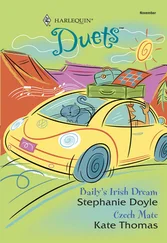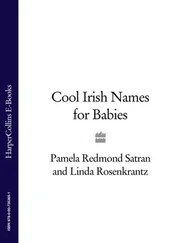
HarperCollins Publishers
Westerhill Road
Bishopbriggs
Glasgow
G64 2QT
First Edition 2020
© HarperCollins Publishers 2020
Collins® is a registered trademark of HarperCollins Publishers Limited
www.collins.co.uk
A catalogue record for this book is available from the British Library
Author: Orna Mulcahy
All rights reserved under International and Pan-American Copyright Conventions. By payment of the required fees, you have been granted the non-exclusive, non-transferable right to access and read the text of this e-book on screen. No part of this text may be reproduced, transmitted, downloaded, decompiled, reverse engineered, or stored in or introduced into any information storage and retrieval system, in any form or by any means, whether electronic or mechanical, now known or hereafter invented, without the express written permission of HarperCollins.
HarperCollins does not warrant that www.collins.co.ukor any other website mentioned in this title will be provided uninterrupted, that any website will be error-free, that defects will be corrected, or that the website or the server that makes it available are free of viruses or bugs. For full terms and conditions please refer to the site terms provided on the website.
Print Edition ISBN 978-0-00-834822-9
eBook Edition © October 2019 ISBN 978-0-00-837822-6
Version: 2019-11-08
Contents
Cover
Title Page
Copyright
Introduction
Location Maps
Northern Ireland
West Central Ireland
Southwestern Ireland
East Central Ireland
Southeastern Ireland
Castles
An Culu
Ardgillan Castle
Ardo Castle
Ashford Castle
Askeaton Castle
Athenry Castle
Augher Castle
Ballea Castle
Ballinacarriga Castle
Ballinlough Castle
Ballintober Castle
Ballydonnellan Castle
Ballyhack Castle
Ballynahinch Castle
Bargy Castle
Barmeath Castle
Barretstown Castle
Barryscourt Castle
Belfast Castle
Birr Castle
Blackwater Castle
Blarney Castle
Bullock Castle
Bunratty Castle & Folk Park
Burncourt Castle
Cahir Castle
Carlingford Castle
Carnew Castle
Carrickfergus Castle
Carrigafoyle Castle
Carrigaholt Castle
Castle Bernard
Castle Hackett
Castle Matrix
Castle Pook
Castlegarde Castle
Castletown House
Classiebawn Castle
Clogh Oughter Castle
Clontarf Castle
Crom Castle
Dangan Castle
Desmond Castle
Doe Castle
Donegal Castle
Drimnagh Castle
Drishane Castle
Dromoland Castle
Dromore Castle
Dublin Castle
Dunamase Castle
Dunboy Castle and Puxley Manor
Dungarvan Castle
Dungiven Castle
Dunguaire Castle
Dunluce Castle
Dunsany Castle
Dysert O’Dea Castle
Glenveagh Castle
Glin Castle
Gosford Castle
Hatch’s Castle
Helen’s Tower
Hillsborough Castle & Gardens
Hope Castle
Howth Castle
Huntington Castle
Inchiquin Castle
Isert Kelly Castle
Jigginstown Castle
Johnstown Castle
Jordan’s Castle
Kanturk Castle
Kilcash Castle
Kilclief Castle
Kilcolman Castle
Kilkenny Castle
Killeen Castle
Killua Castle
Killymoon Castle
Kilwaughter Castle
Kinbane Castle
King John’s Castle
Knappogue Castle
Knockdrin Castle
Kylemore Abbey
Lambay Castle
Leamaneh Castle
Leap Castle
Lismore Castle
Lohort Castle
Luggala Lodge
Luttrellstown Castle
Lynch’s Castle
Macroom Castle
Malahide Castle
Mallow Castle
Manderley Castle
Manorhamilton Castle
Markree Castle
Maudlin Castle
Maynooth Castle
McDermott’s Castle
Menlo Castle
Minard Castle
Moher Tower
Monea Castle
Mongavlin Castle
Monkstown Castle
Mountgarrett Castle
Moygara Castle
Moyode Castle
Muckross House
Narrow Water Castle
Nenagh Castle
Newtown Castle
O’Brien’s Tower
O’Malley Castle
Oranmore Castle
Ormond Castle
Parkes Castle
Portaferry Castle
Portumna Castle
Quintin Castle
Redwood Castle
Rockfleet Castle
Roscrea Castle
Shane’s Castle
Slade Castle
Slane Castle
Smarmore Castle
Strancally Castle
Tandragee Castle
Thomastown Castle
Trim Castle
Tully Castle
Tullynally Castle
Waterford Castle
Photo credits
About the Author
About the Publisher
There’s a special romance to Irish castles, whether it’s the ruined stronghold of an ancient Irish clan perched on a rocky clifftop, the monumental tower rising inside a town’s medieval walls, or the castellated fancy of a Victorian tycoon reflected in its own glassy lake.
Combined with the country’s dramatic scenery of craggy coastline, rolling green countryside, ancient woodlands, and loughs, Ireland’s most famous castles are set in dreamy locations beloved by generations of tourists, film-makers, and brides. Think of the majesty of ruined Dunluce, etched against the sky on the north Antrim coast; the thrilling bulk of Blarney Castle, home to the Blarney Stone, which is said to give those who kiss it the gift of fluent talk; or the splendour of Ashford Castle in Cong, County Mayo, the setting for film director John Ford’s sentimental tribute to Ireland, The Quiet Man, starring John Wayne.
It’s not known exactly how many castles dot the island of Ireland but it’s likely to be in thousands. A high number of fortifications reflect a rebellious history reaching back to the twelfth century and lasting all the way to the 1920s, when many of Ireland’s aristocratic homes were abandoned or burned during the War of Independence.
Ruins abound: fortresses destroyed by cannon fire tell of Cromwell’s rampage through Ireland in the late 1640s; the shells of once grand castles, built in prosperous times and then abandoned.
This book provides a guide to 140 or so Irish castles and strongholds, many of them dating back to Norman times and earlier, some of them far more recent, but all selected for their historical or architectural significance.
Some are ancient monuments, standing strong after nearly a thousand years; others mere piles of stones in once strategic settings. Many, like grand Malahide Castle on the outskirts of Dublin and Dublin Castle in the centre of the capital, have been carefully restored and are open to the public. Others can only be viewed externally and from a distance. One or two are twentieth-century replica castles, such as Doonbeg on the County Clare coast – now owned by US President Donald Trump.
Castles first appeared in Ireland with the arrival of the Anglo-Normans in the twelfth century. Land distributed by King Henry II of England was parcelled out to royalists who built fortified towers to protect themselves from the native clans. These castles were built in strategic positions, and consisted of a large square or rectangular tower, known as a keep, surrounded by a large curtain wall. Other defensive measures were a moat, portcullis and drawbridge, and battlements.
By the beginning of the thirteenth century, stone castles began to appear, many built on the orders of King John. Amongst the earliest of these is Dublin Castle, built in 1204. The fortifications of Carrickfergus in Antrim and Trim in County Meath (once known as the Royal County) also date from this period. By the middle of the century, castles had spread throughout Ireland, built by Anglo-Norman families, who quickly integrated themselves, marrying into native families and becoming Hiberniores Hibernis ipsis, meaning “more Irish than the Irish themselves”.
Читать дальше













